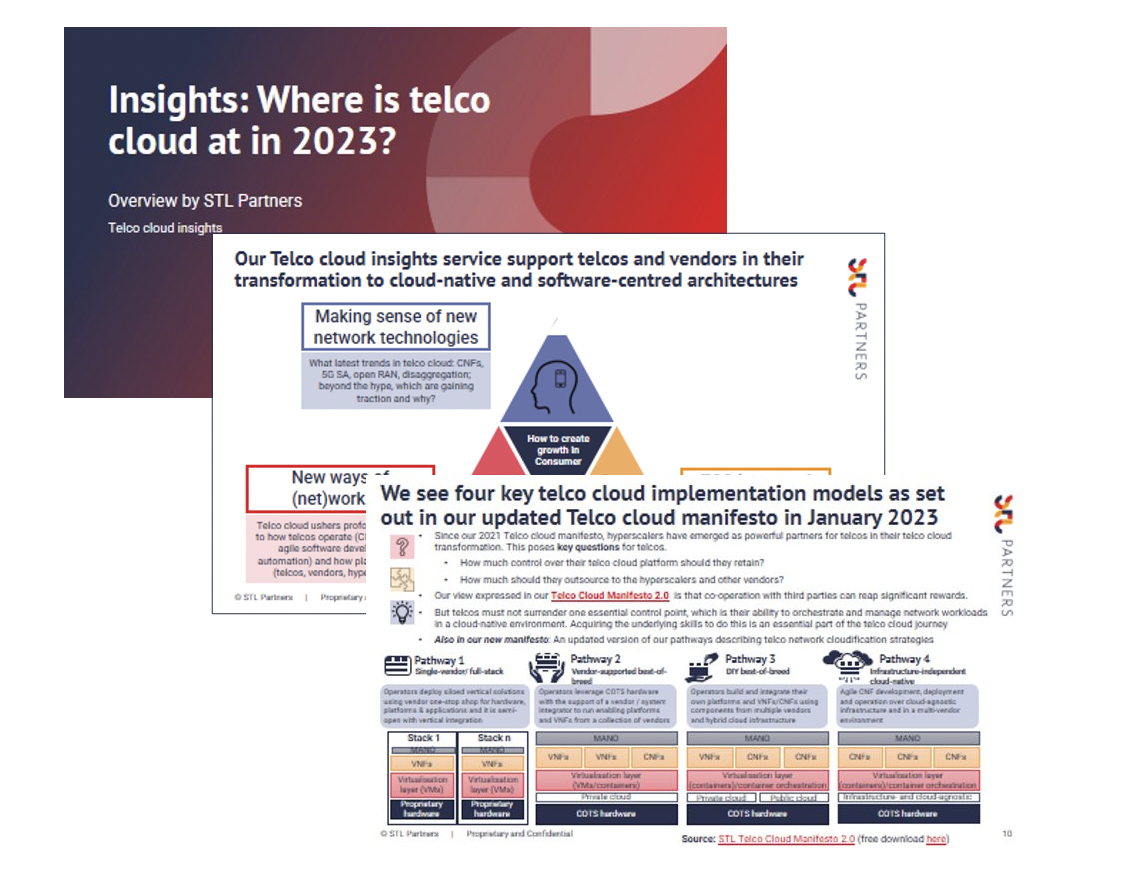
Top ten tenets of Telco Cloud
Below, we outline our top 10 tenets in Telco Cloud, sharing our high-level view of where we see the telecoms industry moving and what we believe the future will be.
1. Networking is special, but not that special
Telco cloud is not just about telecoms networks and IT and the move to cloud native technologies, it is also about changing the fundamental operating model: about processes, policies, skills, organisational structure, partnership models and culture that enable operators to innovate much faster and pursue agile product and service development.
2. The future is chopped: you need smaller building blocks with rigid architecture
The world is continually being chopped into smaller building blocks (from monolithic to microservices-based), which is a fundamental aspect of digitisation. Enforce a super-rigid domain architecture with these building blocks (e.g. BSS, Network, Edge, IoT etc.) to empower domains to adapt and evolve much faster.
3. Decouple, decouple, decouple
To reinforce this rigid architecture, decouple infrastructure from software, decouple IT (BSS) from networking and customer applications, and decouple (the teams’) accountability from control and define clear boundaries.
4. OTT is doomed, long live NEA (network enabled application)
OTT will die (as a term): Networking will increasingly be consumed through applications. Networks will become programable, accessible and “instructable” therefore applications will no longer be “over the top”, but increasingly integrated to and enabled by network APIs.
5. Customer and partner models are changing
More of your network services will be consumed through (real) ecosystems, where the value lies in enabling your own and others’ applications. But to do so, it is not about self-care portals. Provide access to network resources through APIs and developer toolsets, as programmers are becoming customers and customers are becoming programmers themselves.
6. Continuous improvement of existing services will be the new normal
Customers (and solution partners) expect to benefit from improvements and new capabilities, without having to ‘order’ upgrades or contract new product.
7. The distinction between OpEx and CapEx should not matter
Financial reporting considerations should not undermine (the right) resource decisions. Procure capabilities as XaaS to enable you to reallocate resources more quickly and fail faster.
8. Everyone must be coding-conversant
Employees in all functions must be conversant and comfortable with coding and agile development concepts…not just IT.
9. Know the code you use, especially others’ code you use
Understand your own plumbing (IT, Networking, IoT) and take greater ownership of it so that you can add value and create differentiation by bringing together different partner components to your/their customer solutions.
10. Programmable by design is preferable but automating existing may be the best next step
Automating existing human processes and interfaces is a ‘sticky plaster’ interim measure and not a destination for Telco Cloud. It’s still pretty good.
STL Partners is committed to working with executives who share a vision for the industry that involves greater agility and innovation, a bigger role for the network and operators, and believe that implementing Telco Cloud is a key foundation of success. We will be sharing more detailed thoughts on the above and where we see the industry moving very soon, so stay tuned!
Network APIs: Unlocking new value in the telco cloud
Network APIs may offer an answer to the question of how to monetise recent and upcoming telco cloud deployments. Virtualised networks upgrade APIs and enhance the value they offer to developers and customers. To unlock their potential, telcos should focus on optimising their commercial models.
Progress in telco cloud: How do we measure agility?
In the January 2023 update to our Telco Cloud Deployment Tracker, which was looking back at the entirety of calendar year 2022, we recorded an overall slowdown in deployments.
Network Innovation insights pack
This document will provide you with the latest insights from our research and consulting work, including some extract of our Telco Cloud Manifesto 2.0, our latest analysis on open RAN.




